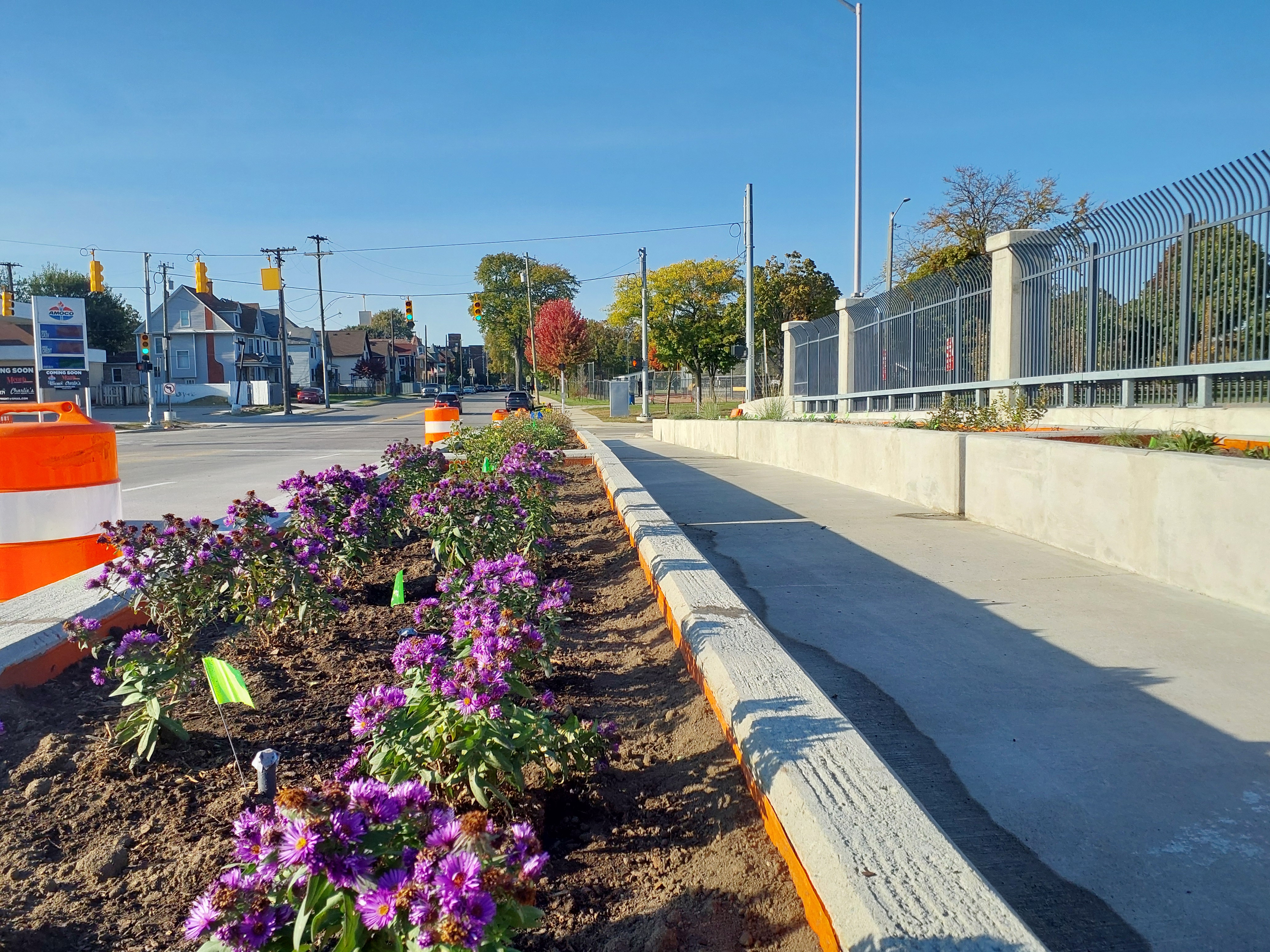
Some of the hydro towers to be removed
The second phase of the Preparatory Activities at the Canadian Port of Entry (POE) which will see the relocation of a complex network of high-voltage electrical distribution and transmission lines to underground and to new overhead locations is well underway. The lines need to be relocated to make room for the new bridge span and POE.
The lines are part of a massive transmission system that circles Lake Erie. It brings power from New York north to Ontario, then across the river to Detroit and back around again to New York. The Hydro One power corridor connecting the international line that crosses the Detroit River to the Keith Transmission Station are an important component of this electrical transmission system which provides power to millions of people on both sides of the border.
Relocation of these lines is a complicated task. The work, worth an estimated $86 million, includes the removal of twelve hydro towers and over 7.5 kilometres (4.7 miles) of new high-transmission voltage cable fluid in more than three kilometres (approximately two miles) of utility ducts.

Individual sections of the HDPE pipe before they are fused together
The installation of the utility duct corridors is the first activity to be undertaken. Sections of 80 centimetre (31.5 inch) diameter high-density polyethylene pipe (HDPE) are secured together by a fusion welding machine which permanently bonds the ends together. The assembled duct is then installed underground using a directional drilling process that bores a path for the fused pipe to be pushed through. Directional drilling eliminates the need for trenching and therefore has less impact on the environment. As well, the installation can be completed faster than using traditional trenching techniques.
A total of nine new utility ducts are being installed. Four ducts will be used to relocate the existing 115 Kilovolt (kV) and 230 kV overhead lines at the Canadian POE. One duct is dedicated to West Windsor Power and the remaining four ducts will be reserved for future expansion of the Hydro One power corridor.
WDBA is working in partnership with Hydro One to complete the installation of the utility duct corridors prior to the delivery of the high-voltage cable in late 2017.



